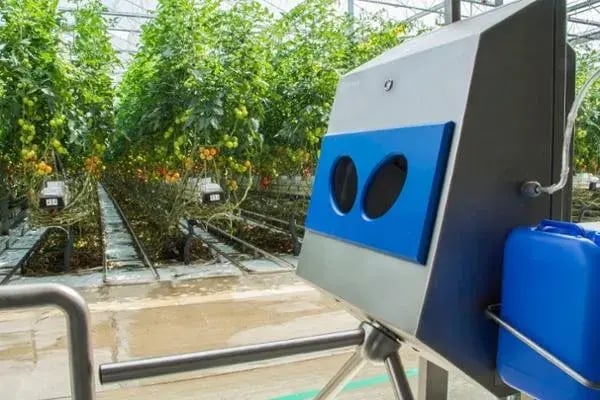What are the three most important spreaders of disease in greenhouse horticulture?

Bacteria, mould and viruses – because they can often spread easily and at lightning speed. For the greenhouse horticulture sector, a disease taking hold in the greenhouse is therefore often disastrous for the crop. But what exactly are the three most important spreaders of bacteria, mould and viruses in greenhouse horticulture?
As someone who runs a business in the greenhouse horticulture sector, you already know that you have to keep bacteria, mould and viruses outside your greenhouses at all costs. Because once they’re inside, they spread like lightning. Causing an enormous economic impact on your greenhouse horticulture business.
The three most important spreaders of disease in greenhouse horticulture are:
- People
- Materials
- Water
Spreading via employees and visitors
Employees and visitors to your greenhouse can be important spreaders of bacteria, mould and viruses. They can be easily brought inside on the hands, clothing and shoes. Employees go from plant to plant, causing a disease to spread quickly. So it’s important that people who enter the greenhouse are free from bacteria, mould and viruses. By installing a hygiene lock and ensuring that it is the only way to enter the greenhouse minimises the risk of infection through people. In addition to washing and disinfecting the hands and the soles of shoes, total preference is given to employees and visitors changing all their clothes before they enter the greenhouse. Wearing gloves while working is also advisable.
Infection via tools and means of transport
Viruses can often survive on dry materials and therefore be mechanically transmitted by them. Examples of this include infection via tools such as blades and shears and infection via packaging and means of transport such as crates and pallets. To guarantee that tools, crates and pallets are virus-free, these must be disinfected before they are taken into the greenhouse. This can be done by using crate, pallet and tool washers.
What is often forgotten is that forklift trucks can also spread viruses when they drive inside the greenhouse. These vehicles – and at any rate their wheels – should also be cleaned and disinfected, preferably by means of a disinfection bath. It is important to remember here that the bath must be periodically refreshed. Specifically, this means that the bath must be topped up with fresh disinfectant after a set number of transport movements.
Water as a source of infection
A substrate culture is used to grow crops. Water – often rainwater – plays an important role in this. It is obviously extremely important for this water to be clean. The water quality should therefore be regularly checked for the presence of bacteria, mould and viruses. Drainage water that is recirculated for re-use should be disinfected before it passes through the substrate culture again. This can be done with UV radiation, ozone or heat.
That water that is used to clean the greenhouses, for the crate and pallet washers, and for the hygiene lock should also be regularly checked.
hygiene toolkit
The best protection for your crop is good hygiene. Elpress is pleased to offer you tools to get hygiene standards in your business right and keep them that way. So download our handy toolkit with a clear hygiene protocol and tips for good hand hygiene today.
.webp)






